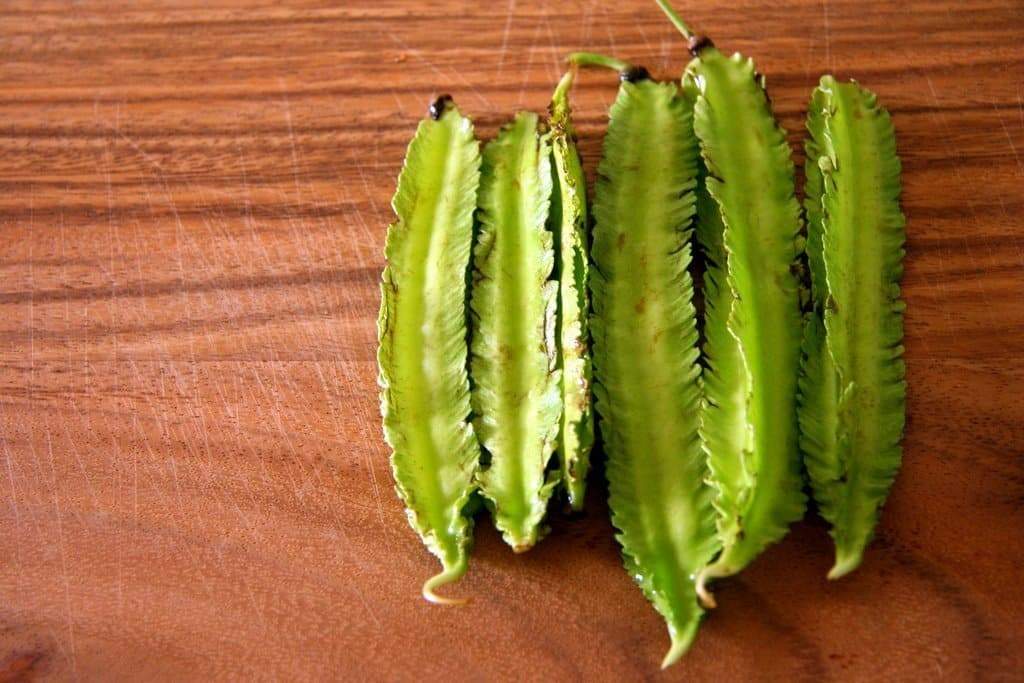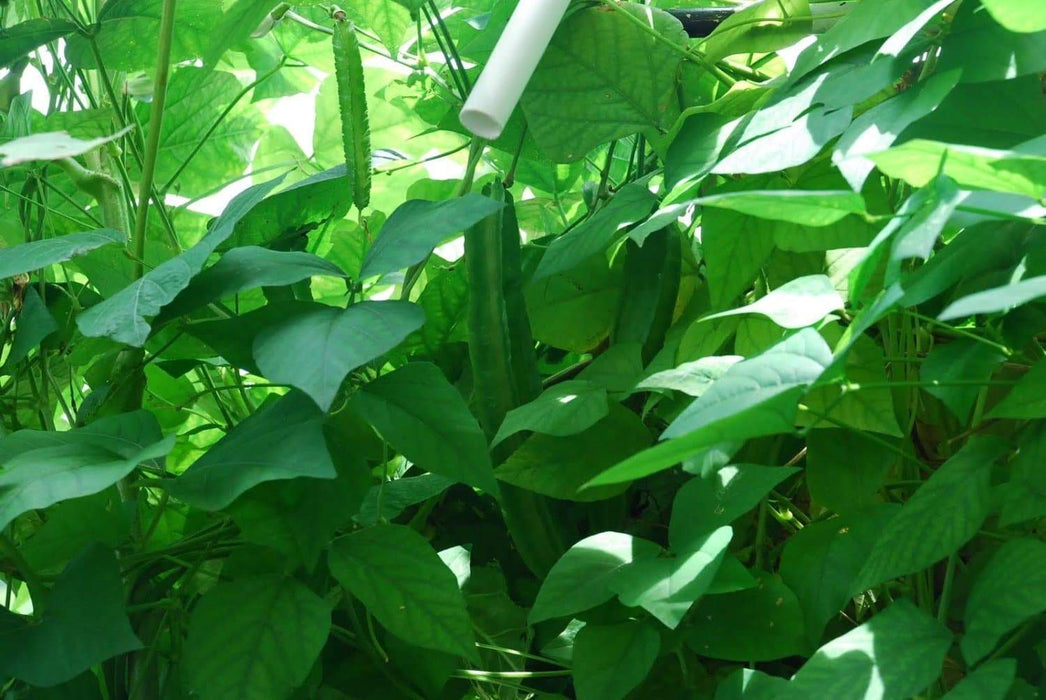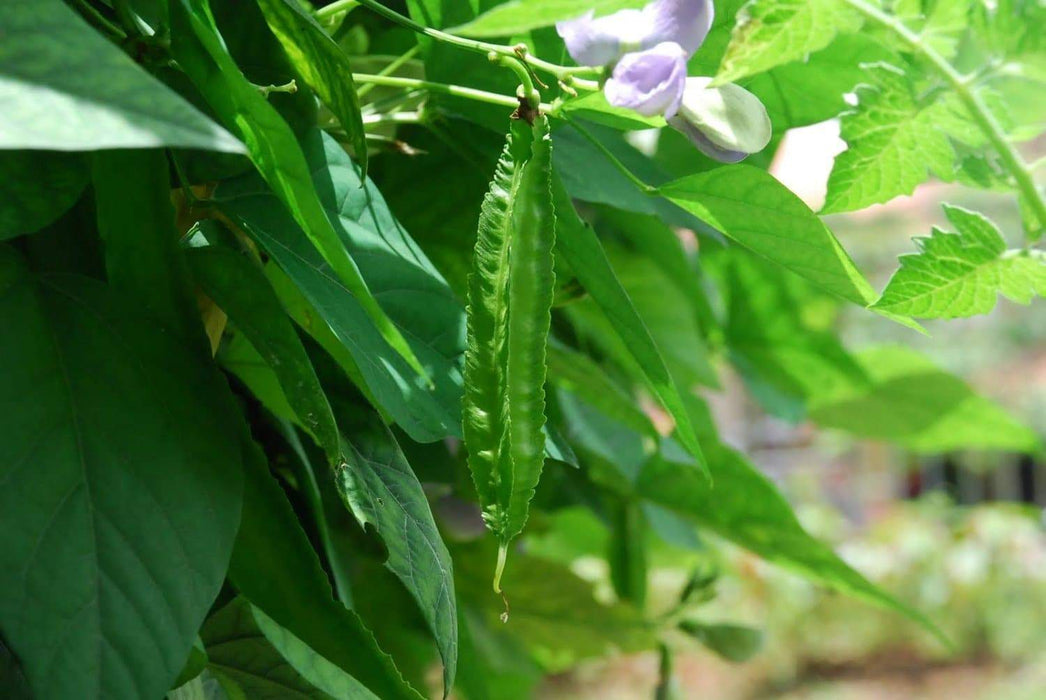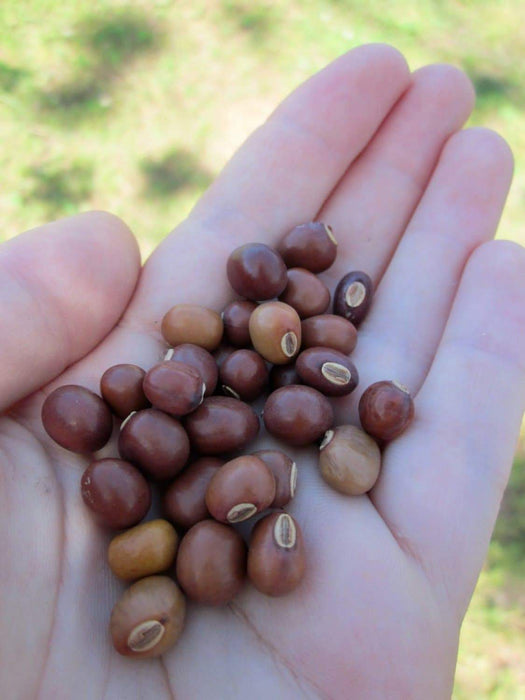
Winged bean (BUSH BEAN) Asian vegetable, ASPARAGUS PEA
Most orders are processed by the next day
Select your desired size and/or color from the available options.
Winged bean,asparagus pea, four angled bean, goa bean,manila bean All parts are eaten from the pods to the flowers, leaves, stems and roots
Winged Bean Seeds,Also Known As:asparagus pea, four angled bean, goa bean, manila bean
(Psophocarpus tetragonolobus)
Asian vegetable names...
- China: yi dou, su ling dou
- India: goa bean
- Indonesia: kecipir
- Japan: shikaku mame, urizun
- Malaysia: kacang botol, kacang kelisa, kacang sirek, kalkang
- Philippines: : sigarilyas
- Sri Lanka: dara dham bala
- Thailand: thua phuu, touh puu
- Vietnam: dau rong
The winged bean (Psophocarpus tetragonolobus) is a tropical perennial that can be grown in more northern climates as an annual. The unusual-looking beans have four vertical fins and taste like a cross between dried beans and snap beans. Although winged bean vines look very similar to other pole bean plants, they are very vigorous and can reach lengths of 15 feet. The attractive pale blue flowers make the winged bean plant a welcome addition to landscaping plans as well as food garden plans.
The winged bean is a tropical vine producing large highly nutritious winged pods. All parts of this uniquely flavoured plant are eaten from the pods to the flowers, leaves, stems and roots. Pods are
best picked when young and added to stir-fries. The flowers may also be added to dishes and sometimes used to add colour to rice or pastries. Young leaves are picked and prepared as for many
leafy vegetables like spinach. The roots can be used in a similar fashion to potatoes and much more nutritious. Dried seeds are also ground to make a form of flour.
1
Start winged bean seeds in the spring after all danger of frost is gone and the soil has warmed. Drop the seeds in a clean jar or glass, and fill the jar halfway with water. Place the jar in a warm place where it won't be disturbed. Change the water in the jar twice a day for two days. This soaking will help the seeds to germinate.
2 Dig your garden plot in a warm and sunny location away from any obvious sources of shade, such as large trees or outbuildings. Place the plot near a patio or alongside a sidewalk to take advantage of the residual heat from the concrete, if possible. Winged beans are tropical plants and love their feet to be warm.
3
Dig the garden plot down to a depth of 12 inches, and remove any obstructions such as roots or weeds. Mix in a 3-inch layer of compost.
4
Plant the seeds 1 inch deep, and space the seeds every 6 inches. Insert a sturdy trellis or series of poles along the row of beans. Bury the posts deeply, as these beans grow very vigorously and need a sturdy support system.
5
Water the winged bean plants thoroughly, and keep them well-watered but not soaked. Pinch off the tops of the plants when they are about 12 inches tall to encourage branching and spreading. Fertilize the plants after 1 month by side-dressing with 1 cup of 20-10-10 fertilizer for every 10 square feet of garden.
LET OUR CUSTOMER SPEAK FOR US

![[Seeds] - Caribbeangardenseed](http://caribbeangardenseed.com/cdn/shop/files/gift-card-gift-card-1_1024x1024_dfa857db-9150-4315-a362-7f0bb3fb9c47_60x28.png?v=1703978838)



